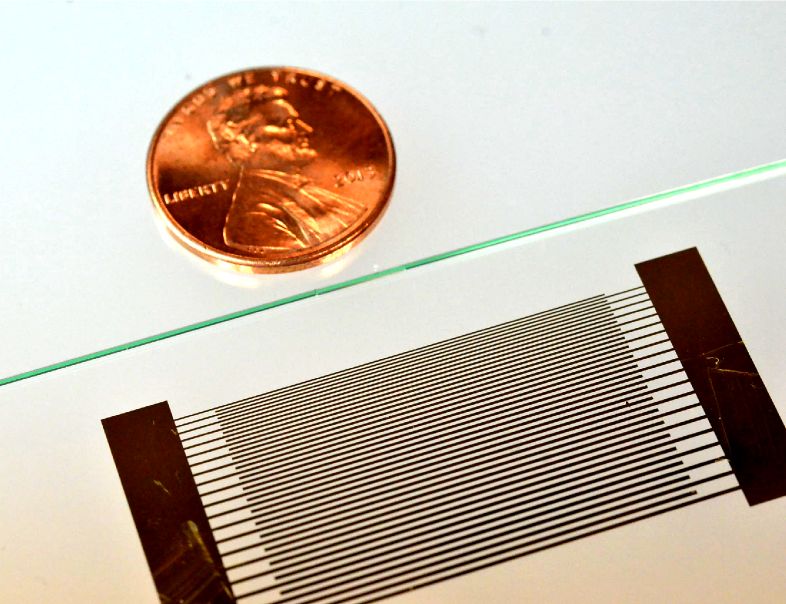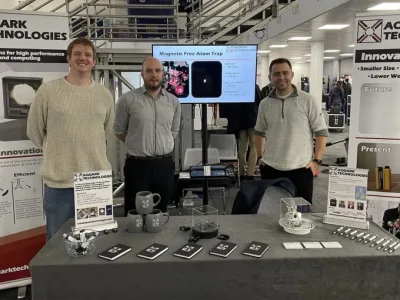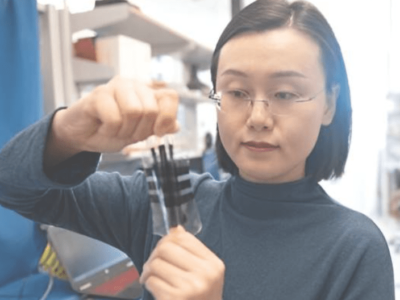
In a paper published in the ACS Nano journal, “Enriching Nanoparticles via Acoustofluidics”, they describe an acoustofluidic nanoparticle-enrichment device able to generate single vortex acoustic streaming inside a glass capillary through the use of low-power acoustic waves.
Operating down to 5V, the low power set up consists of a piezoelectric substrate (LiNbO3) with chirped interdigital transducers (IDTs) fabricated on top and a square glass capillary bonded on the substrate through a thin UV epoxy layer. By applying a radio frequency signal to the transducers (in the MHz range), a SAW (surface acoustic wave) is generated and travels perpendicular to the glass capillary, actuating a torsional vibration mode and generating a type of acoustic streaming with a single vortex.

This seemingly simple setup was first proven and understood with mechanical simulation tools. Based on these results, the researchers were able to optimize and develop a working prototype, combining single vortex acoustic streaming with an acoustic radiation force to enrich submicrometer- and nanometer-sized particles within the small capillary volume.

The researchers verified their findings experimentally, axially concentrating silica and polystyrene particles ranging from 80nm to 500nm in the centre of the capillary. The acoustofluidic chip was also used in an immunoassay in which nanoparticles that captured fluorescently labelled biomarkers were concentrated to enhance the emitted signal. In some instances, the axial concentration within the capillary allowed the detection of biomarkers at very low concentrations (as low as 0.9nM), enhancing the signal intensity 30-fold compared to direct fluorescence measurements which failed to reveal the faint presence of the same biomarkers.
Integrated with micro-spectrometers, such low-power and low-cost acoustofluidic chips could serve many point-of-care applications, and a startup has been spun-off to commercialize the acoustofluidic chip.
“Our tentative roadmap to commercialization is 2020”, revealed professor Tony Jun Huang, a co-author of the paper leading this research at the Pratt School of Engineering from Duke University.
Visit the Acoustofluidics Lab at https://acoustofluidics.pratt.duke.edu
 If you enjoyed this article, you will like the following ones: don't miss them by subscribing to :
eeNews on Google News
If you enjoyed this article, you will like the following ones: don't miss them by subscribing to :
eeNews on Google News


